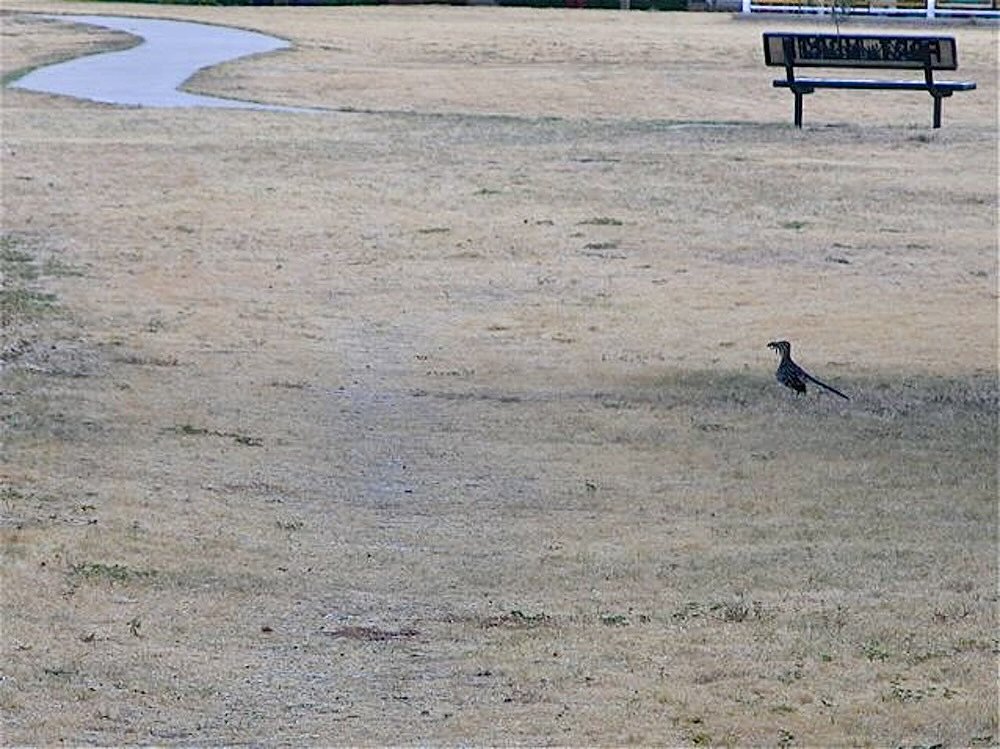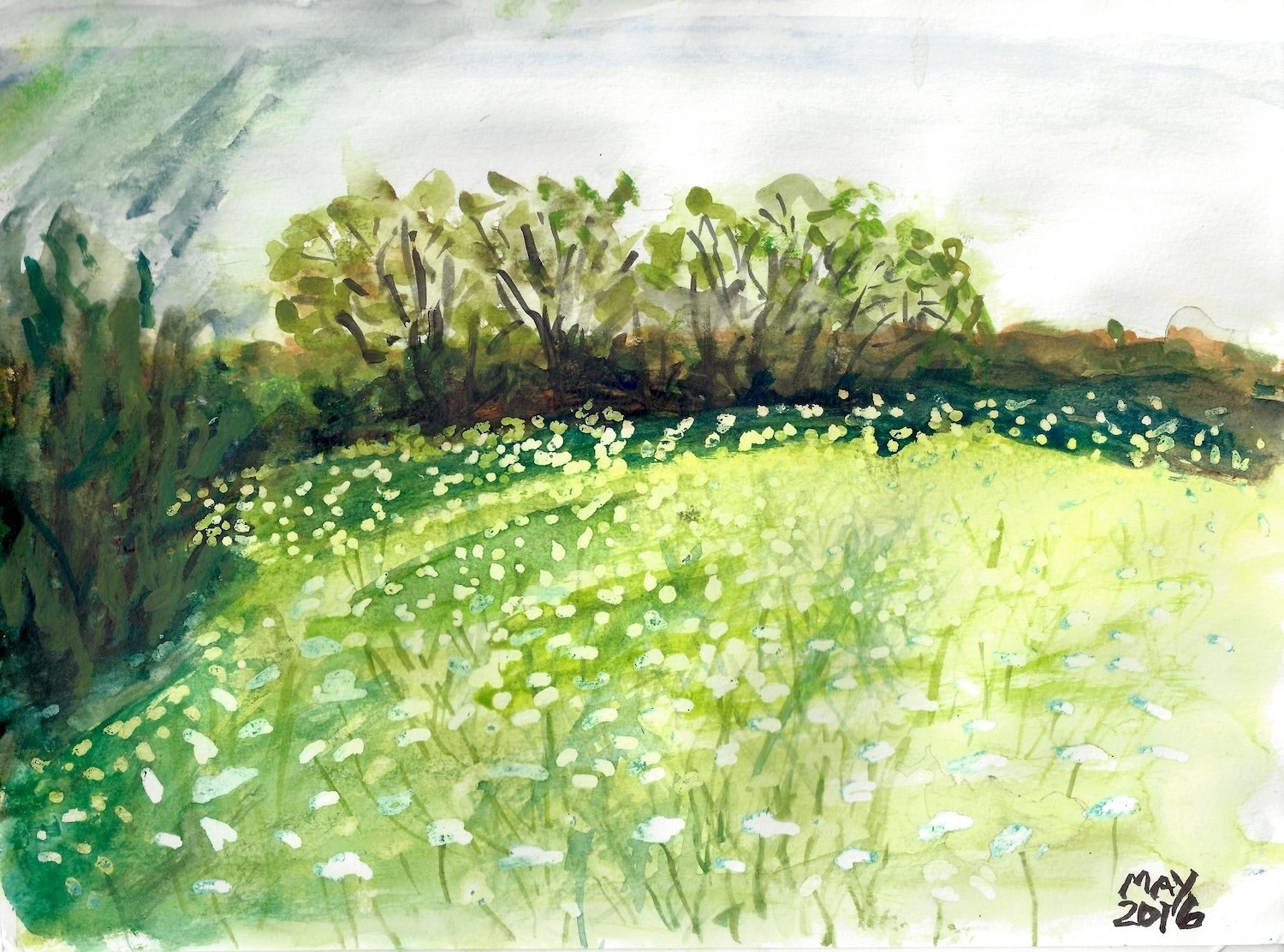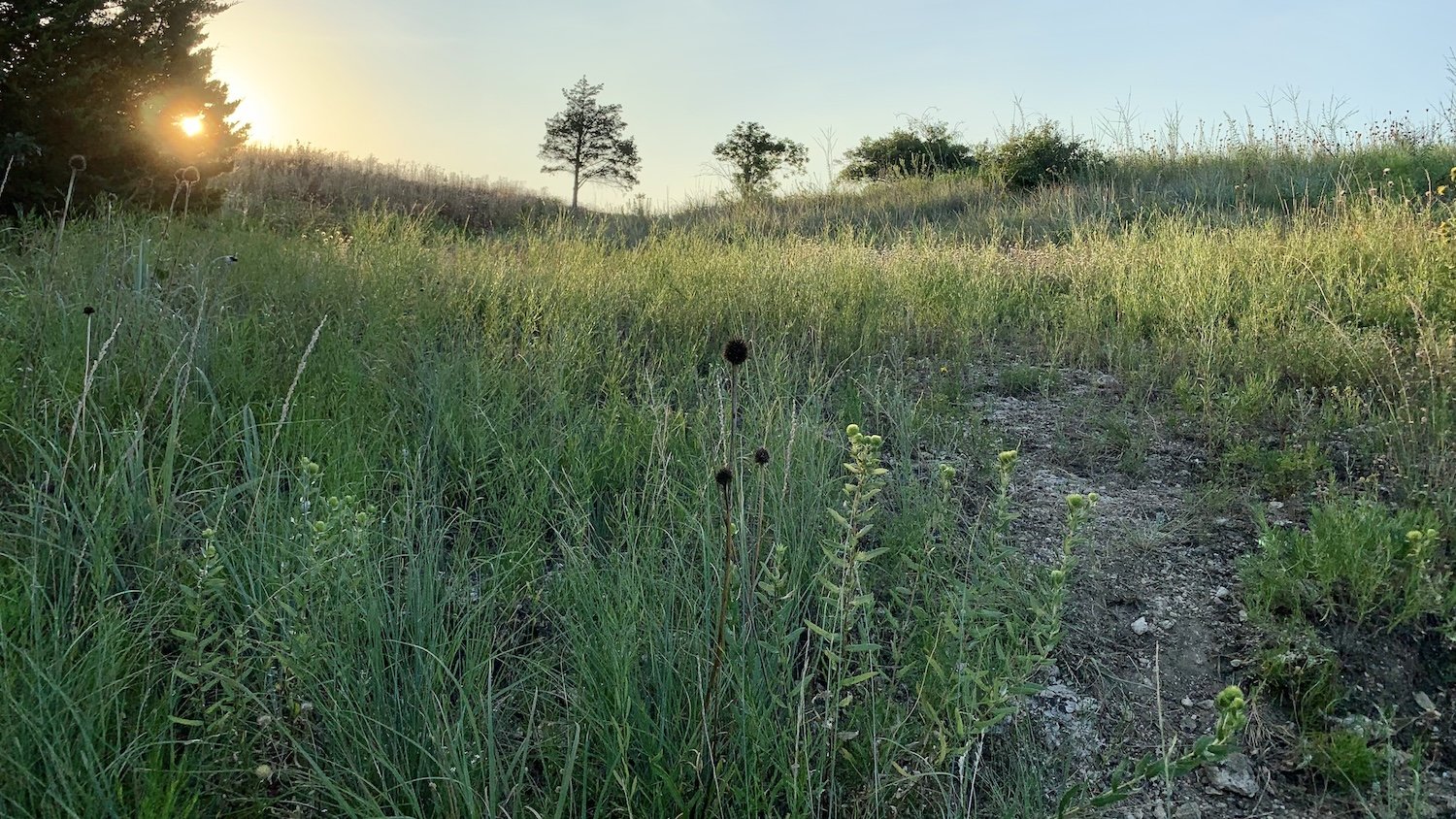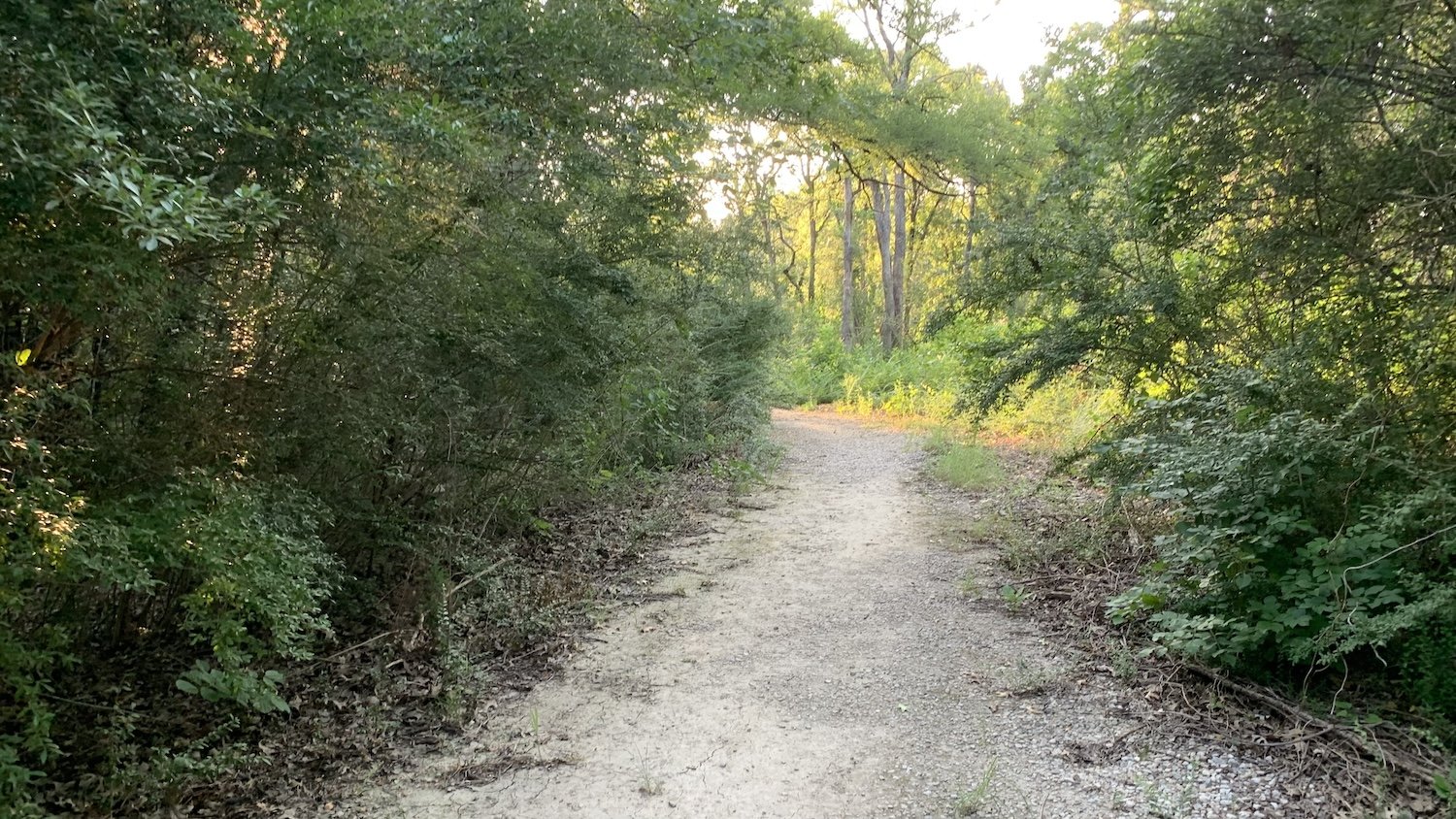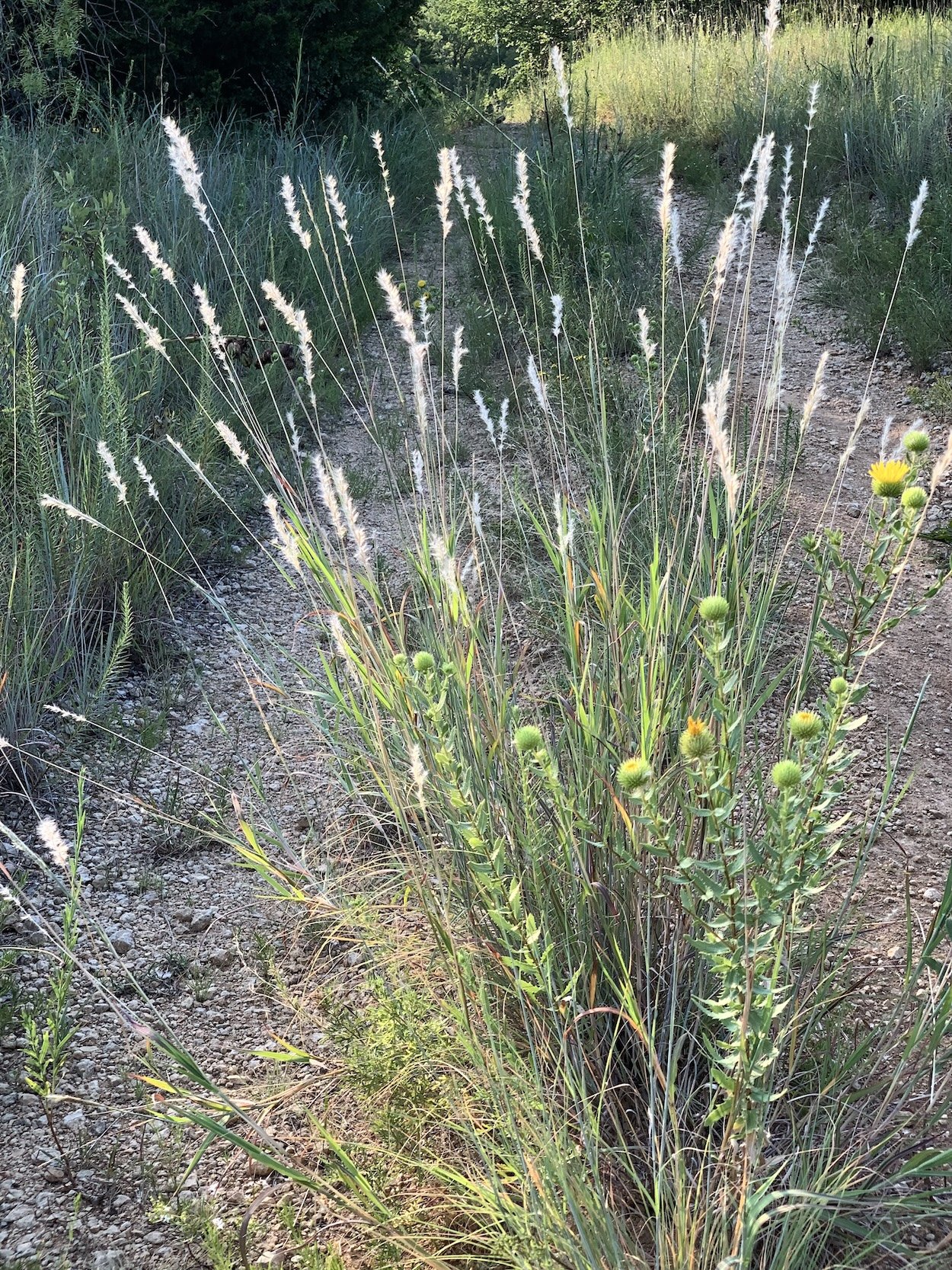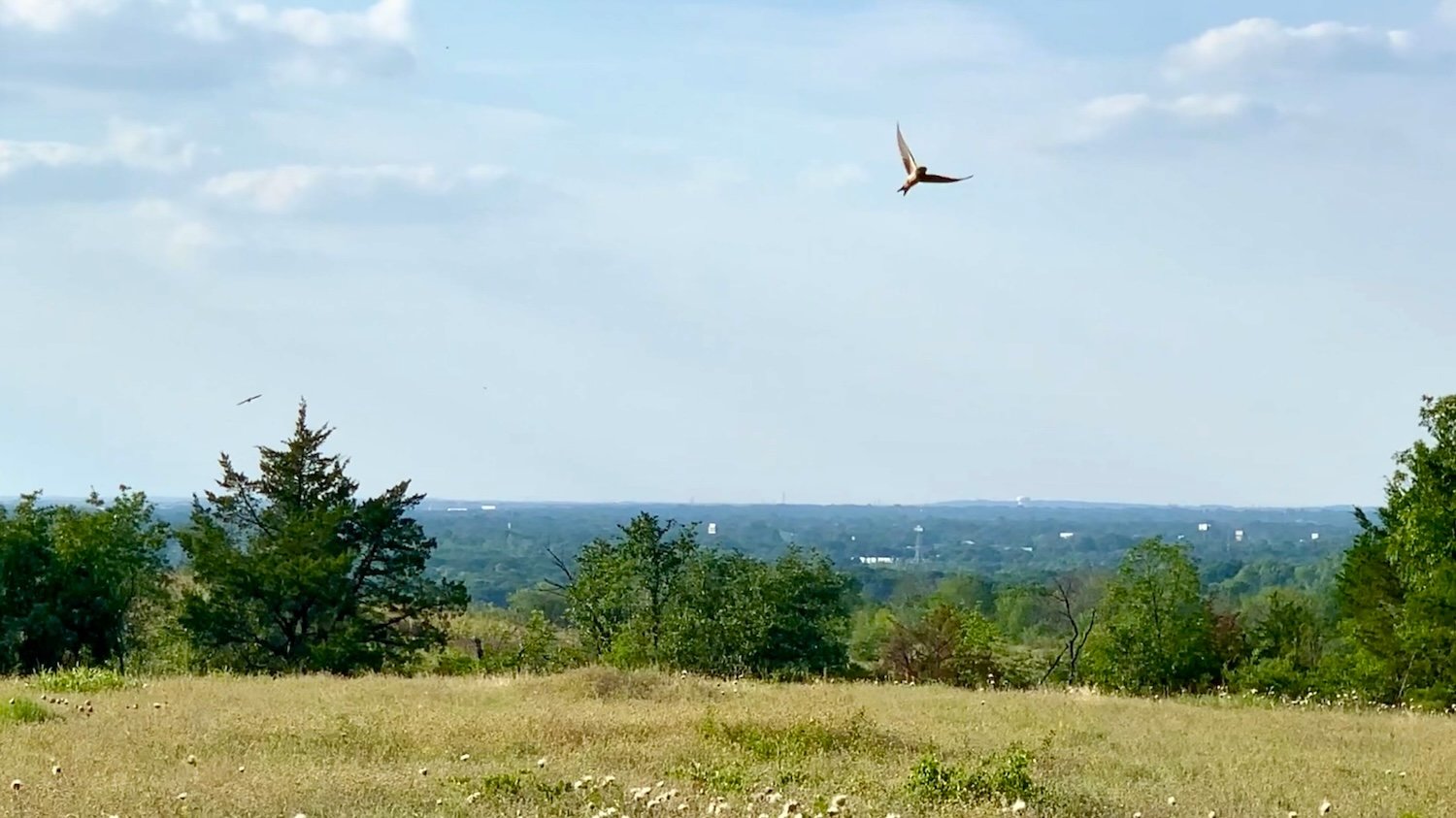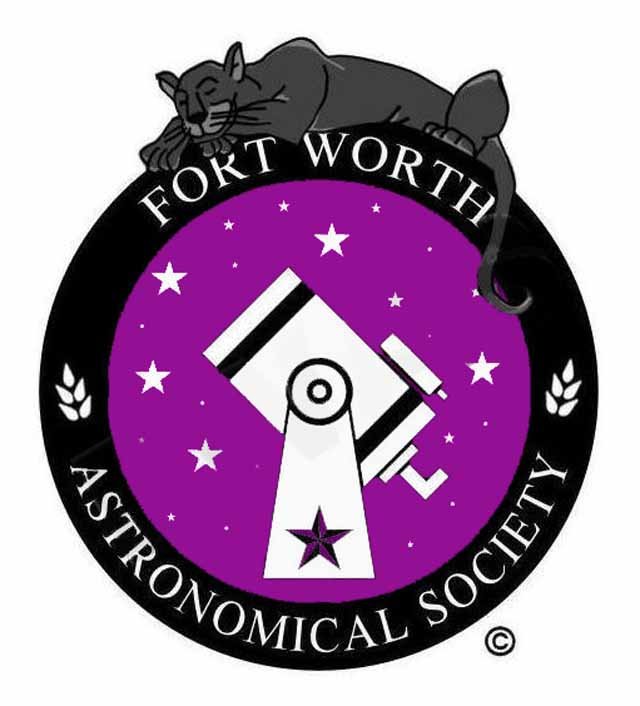Prairie Notes #211 - From the Vault: Summer of My Roadrunner
Prairie Notes are monthly photo/journal observations from Tandy Hills Natural Area by Founder/Director, Don Young. They include field reports, flora and fauna sightings, and more, mixed with a scoop of dry humor and a bit of philosophy.
They are available free to all who get on the FOTHNA email list.
From the Vault:
Summer of My Roadrunner
Prairie Notes #211
July 1, 2024
1) From the Vault: Summer of My Roadrunner
2) Prairie Artist of the Month - Debora Young
3) Field Report - June
4) New Species Report - June
5) Return of the Interns
6) PrairieSky / StarParty Report
7) Summer Reading: Mindfulness In Nature
8) Prairie Proverb - Winona LaDuke
1) From the Vault:
Summer of My Roadrunner
The last time I observed a Greater Roadrunner at Tandy Hills was in 2011. I discovered they were seen at the FW Nature Center and Sheri Capehart Nature Preserve as recently as last winter. But mostly, they seem to avoid the increasingly urban core. Who can blame them. But in 2011, I had several close encounters with one particular Roadrunner that I’ll never forget.
I first saw it near the main trail near View Street. It saw me, too, but was busy hunting lizards and quickly disappeared into the grass. A few days later it showed up on the road in front of our house across from the natural area. (They call them ROADrunners for nothing.) Days later it was in our backyard sitting comfortably on a birdbath. (2011 was a drought year.) The last time I saw him/her was on the Iconic Meadow. It climbed up a dead tree around sunset and we chatted for a few minutes before I hiked home.
With a bit of summer doldrums going on and my inspiration on vacation, I decided to dig in the ol’ vault and re-post Prairie Notes #57 from 2011. I hope you enjoy reading
Prairie Notes #57: Summer of My Roadrunner, 2011
Approaching my 60th Summer, I recently had my first close encounter with a Greater Roadrunner (Geococcyx californianus.) The strange looking, beautifully-colored and somewhat, comical bird, has always seemed larger than life to me, mysterious, almost legendary. I have always thought of them as desert dwellers, but my new friend has been following me around Tandy Hills, and my backyard, all summer. This particular, State Bird of New Mexico, seems intent on becoming the Official Bird of Tandy Hills Natural Area.
Also known as, Chaparral Cock and Paisano Bird, they are members of the Cuckoo family. Their diet consists of insects, lizards and snakes, mostly. They are renowned for killing and eating Rattlesnakes. Although Fort Worth is not technically a desert (yet) the epic drought of 2011 makes it seem that way. The Roadrunners seem to have adapted here. Rattlesnakes, beware!
These birds are so fast they can snatch a Hummingbird or Dragonfly out of the air. I have witnessed my agile, bushy-crested friend feasting on Dragonflies and Texas Spiny Lizards, both speedy critters, and I found fragments of small garden snakes in my birdbath last week. Since the few water holes at Tandy Hills are now bone dry, they have annexed our yard into their territory.
Roadrunners are reluctant flyers, but they are the fastest, running-flying bird, reaching speeds of up to 26 mph. Humans don't stand a chance. Only flightless Ostriches can run faster. But Roadrunners can and do fly, when necessary.
The last time I saw my Roadrunner friend was last week around sunset. He saw me coming and half flew, half walked up a dead tree. We stood watching each other in the fading light. It watched me curiously and somewhat warily. Perhaps, a nest was nearby since this is where I saw a pair of them in late Spring. We had a good talk. I tried to explain that, he was safe with me and that, Roadrunners were my new totem animal and that, my water is his water, my yard, his yard. He seemed to understand and went about his preening.
I also thanked him for protecting Tandy Hills from evil spirits, just as his ancestors did for the Hopi and other Pueblo Indian tribes. I thanked him for leaving me a feather to remind me of our encounter and to seal our bond. And mostly, I thanked him for reminding me to stay connected to the natural world.
DY
> Go here to listen to a Roadrunner voice: http://www.allaboutbirds.org/guide/greater_roadrunner/id
> Special webpage about Roadrunners for kids: http://www.enchantedlearning.com/subjects/birds/printouts/Roadrunner.shtml
> The Roadrunner: The Tenth Anniversary Edition, Wyman Meinzer, (1993) 2003. The classic book on the subject with a stunning photographic essay. http://www.amazon.com/Roadrunner-Tenth-Anniversary-Wyman-Meinzer/dp/0896...
> The Real Roadrunner, by Martha Anne Maxon, 2005. Full of info and insight into my new favorite bird. http://www.amazon.com/Real-Roadrunner-Animal-Natural-History/dp/0806136766
> Roadrunner Factoid: Although known as monogamous, the male Roadrunner is also a crafty fellow. When luring a mate he will tempt the female with food while dancing around her until she begs. Only after copulation will he release the food. (Guys: Don’t try that at home.)
2) Prairie Artist of the Month - Debora Young
Of all the artists featured in this column, Debora Young has probably spent the most time at Tandy Hills. Not only has she has been deeply involved in all Friends of Tandy Hills activities since its founding in 2004, she has walked every square inch of the place giving her a unique perspective. In 2008, Debora published more than 100 of her Tandy Hills drawings in, Prairie Wildflowers Illustrated. Since 2016, she has been working on a project titled, The Birds of Tandy Hills, a collection of 130 hand-cut and painted, paper bird mobiles. They include every bird observed at Tandy Hills from a 1.5” Hummingbird to a 36” White Pelican. She is working from a list created in 2007 by ornithologist, Tom Stevens, and other iNaturalist observations. Debora is also a stained glass designer and was a finalist for The Hunting Prize, in 2010.
Debora’s statement: “Tandy Hills Natural Area is across the street from our home. It’s a place of un-landscaped nature, changing from day to day and season to season. I wander for 15 minutes with my fold-up camp stool and art supplies in a small back-pack . Then and there I proceed to sketch, sometimes standing other times sitting. It’s great fun and you never know where you’ll end up.”
Check out Debora’s website HERE.
CLICK each image to view it un-cropped.
Tandy Hills Fall Landscape, watercolor sketch (6” x 12”)
Tandy Hills Bird Project, 2024, watercolor on Bristol board (130 birds total when complete this summer.)
3) Field Report - June
Soon after the summer solstice, the heavy rains of spring finally gave way to more typical summer weather. A walk on the hills in late June, however, belies this fact. The native grasses are thick and thriving and the summer wildflowers are in bloom. The seeps are probably full from all the spring rain and it shows. Also, a small flock of Barn Swallows returned after a 3-year absence. They gobbled up lots of insects and left when the high temps arrived.
There is always something special going on at Tandy Hills but plan your visit wisely when visiting in summer. Early morning or late afternoon is best. Water, hat and sunscreen are advised.
There is a lot to see here. CLICK each photo for best viewing.
Summer sunset on a healthy, grassy meadow.
After a four year absence, a flock of Barn Swallows returned to Tandy Hills feeding daily on the insect explosion after a wet spring.
4) New Species Report - June
The summer interns and members of the Native Prairie Association of Texas helped observe and identify 18 new species in June, ending the month at 2,121. Here are a few of the notable new species found in June. You can also check them all out on the Tandy Hills iNat Project Page HERE.
5) Return of the INterns
A new crew of summer interns are back at Tandy Hills. Keeara, Paige and Calvin are on duty several days a week, greeting and educating park visitors, doing plant surveys, and land management duties. All three will return to college in the fall. They are pictured here with their boss, Michelle Villafranca, Fort Worth Park & Rec Natural Resource Planner. We look forward to working with them all summer. BTW: The interns are paid with a grant from Communities Foundation of Texas, the Giving Day people.
6) Prairie Sky / Star Party report
For a hot and humid summer evening, the June star party went pretty well. The Fort Worth Astronomical Society (FWAS) had 10 telescopes set up and had about 30 visitors. The next star party will be, Saturday, July 13th, 2024. Read the sky-watching forecast from FWAS rep, John McCrea, below. View the full 2024 PrairieSky / StarParty schedule HERE.
For the July 13th FWAS/Tandy Hills star party, we will enjoy a summer under the stars with some of our favorite constellations. The center of our galaxy can be found in the constellation, Sagittarius (the archer). Also, visible will be some of the well-known constellation such as: Scorpius (the scorpion), Lyra (the lyre), and Cygnus (the swan). The remaining are Ursa Major, Cancer, Virgo, and Hercules. The Summer Triangle (Vega, Deneb, and Altair) will be visible.
The sun will set at about 8:38 PM on July 13th. The moon will be a 7.6-day old waxing gibbous and will be in the constellation Virgo (the virgin). There will be no planets visible during the star party. Saturn will rise about 11:45 PM.
The globular cluster, Ω-Centauri will barely be visible. It will be at 204O compass heading (southwest) or RA 13hr 28’, Dec -47O 37’.
Note of interest: July 4 is aphelion, when the Earth is farthest from the Sun in its orbit.
7) summer Reading: Mindfulness In Nature
Local naturalist, herpetologist and author, Michael Smith, has a brand new book out titled, Mindfulness In Texas Nature. It is supplemented with beautiful photos by, Meghan Cassidy. Notably, the epilogue is based on Michael’s visit to Tandy Hills, seeing Trout Lilies. Here’s what Michael says about the book:
“I wrote about mindfulness in nature and how a person might go about practicing it. I discussed the documented benefits of time spent in nature along with the benefits of mindfulness and the related practice of Shinrin-Yoku or “forest bathing.” The lower blood pressure and stress hormones, the boosted immune functioning, the decreases in anxiety and ruminative thinking, and other good things that happen.
Mostly the book consists of narratives of all those trips, the adventures and quiet moments without gadgets or agendas, just being there among all the grasses, woodlands, and wildlife in those wonderful places. What I wrote brings those days back, and Meghan’s photos make them even more vivid.”
MICHAEL A. SMITH is the author of The Wild Lives of Reptiles and Amphibians: A Young Herpetologist’s Guide and coauthor of Herping Texas: The Quest for Reptiles and Amphibians. Cofounder of the Dallas–Fort Worth Herpetological Society, he is also a retired, licensed psychological associate who lives in Arlington, Texas. MEGHAN CASSIDY is a photographer specializing in nature and arachnology. Formerly of the DFW area, she now lives in Minnesota.
You can purchase the book at the Texas A&M Press HERE:
https://www.tamupress.com/book/9781648431814/mindfulness-in-texas-nature/
8) Prairie Proverb - Winona LaDuke
> Note: In 2024, all Prairie Proverbs will be from inspirational women.
“We are not separate form the Earth, we are part of it. Our ancestors knew this, and it is time for us to remember.”
Become a member here: https://www.tandyhills.org/donate
Prairie Notes© is the official newsletter of Friends of Tandy Hills Natural Area, a 501 (c)(3) non-profit organization. All content by Don Young except where otherwise noted.




